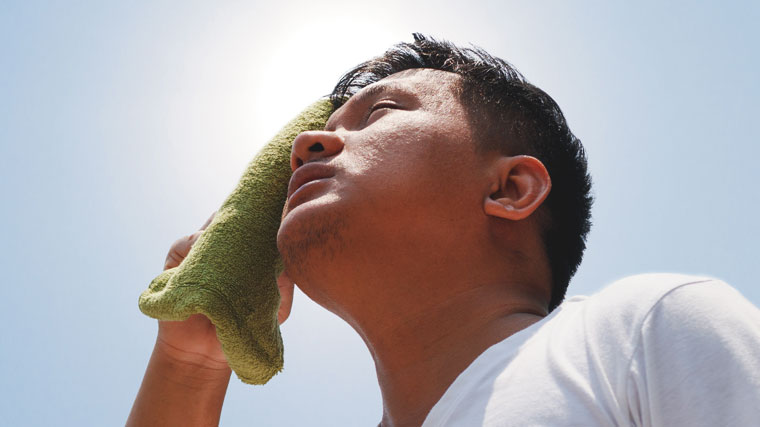Heat Stroke is Serious and Needs Immediate Attention

Find Your Perfect Match
Answer a few questions and we'll provide you with a list of primary care providers that best fit your needs.
The human body has a normal core temperature of 98.6°F (37°C). If the environment is hot or we are very active, our body heats up. To keep our core temperature stable, the body releases excess heat into the air in two ways: from the blood vessels near the skin's surface and through sweat.
Our body stays cool by sweating and releasing heat through our skin. If this cooling system fails, our body temperature may rise to very high levels. In severe cases, the brain and other vital organs may shut down. This is known as heat stroke. Unless your body is cooled, death can occur within minutes.
Here are some symptoms of heat stroke:
- Body temperature of 104°F (40°C) or higher
- Hot, dry skin
- Nausea and vomiting
- Rapid heartbeat
- Quick, shallow breathing
- Confusion or fainting
- Loss of balance
Heatstroke is an extreme medical emergency. Call 911 right away. Until help arrives, move the affected person into the shade. Remove the person’s clothing, and apply cool water or wet towels or sheets. Drink water or a sport drink. (Do not try to give a drink to someone who is unconscious.)
Heat Exhaustion
Although less serious than heat stroke, heat exhaustion (sometimes called heat stress) should also be treated immediately. Heat exhaustion is the body's response to an excessive loss of the water and salt, usually through excessive sweating. Here are some symptoms of heat exhaustion:
- Core body temperature may rise up to 101°F (38.3°C).
- Sweating a lot
- Cold, moist, pale or flushed skin
- Feeling very weak or tired
- Headache, nausea, loss of appetite
- Feeling dizzy or giddy
- Rapid or weak pulse
Heat exhaustion should be treated by:
- Resting in a cool, shaded or air-conditioned area.
- Drinking plenty of water or other cool, nonalcoholic beverages.
- Taking a cool shower, bath, or sponge bath.
Heat Cramps
Heat cramps are another less-dangerous symptom of overheating and may accompany heat exhaustion. The following symptoms are indications the heat cramps could be serious.
- Sweating a lot
- Painful muscle spasms during activity or hours afterward (heat cramps)
- Developing tiny red bumps on skin and a prickling sensation (prickly heat)
- Feeling irritable, dizzy, or weak
Here are some recommendations to treat heat cramps:
- Rest in a cool, shady area.
- Drink water or a sport drink.
The Centers for Disease Control recommends avoiding exposure to extreme heat, sun and high humidity when possible. Here are some steps to prevent heat stress:
- Wear light-colored, loose-fitting, breathable clothing such as cotton
- Avoid non-breathing synthetic clothing
- Schedule heavy work during the coolest parts of day
- Take more breaks in extreme heat and humidity
- Take breaks in the shade or a cool area when possible
- Drink water frequently. Drink enough water that you never become thirsty.
- Avoid drinks with caffeine, alcohol, and large amounts of sugar
Find Your Perfect Match
Answer a few questions and we'll provide you with a list of primary care providers that best fit your needs.

